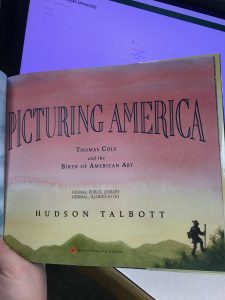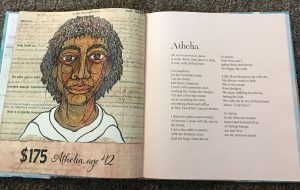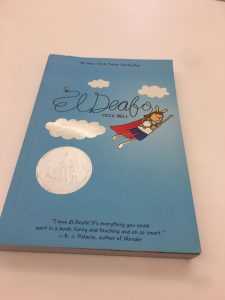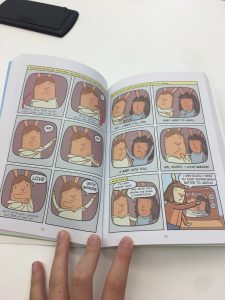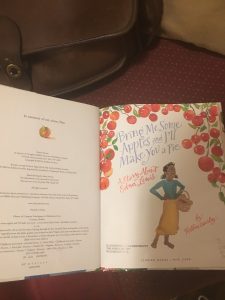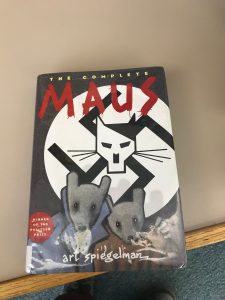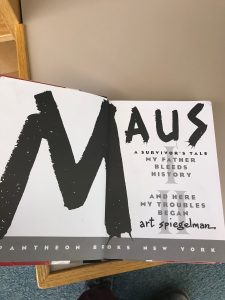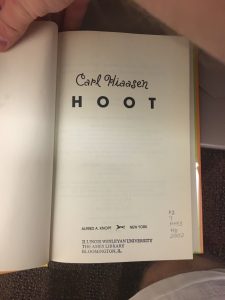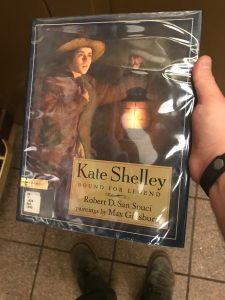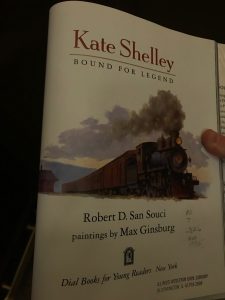Author(s)/Illustrator/Photographer: Hudson Talbott
Publisher and Year Number of pages: Nancy Paulsen Books, 2018, 31 pages.
Genre: Nonfiction

Descriptive Annotation: The cover features an artistic rendering of Thomas Cole at work on one of his superb paintings of the Catskill Mountains in Upstate New York. The depiction demonstrates the way the sun sets at night on those majestic mountains. The artist who is pictured made the American art scene a respected one on the international stage, and his pieces are as well-known today as any Monet or Picasso. As for the book itself, it is a brilliant storybook that involves the engrossing story of a young English boy, Thomas Cole, who is forced to flee his homeland as a result of the ongoing Industrial Revolution there (late 1700s-mid to late 1800s). Thomas, our protagonist, is a boy who is used to his beautiful English countryside home life with his mother, father, brother Sami, seven sisters, and his grandpa Jed. Family life for him is consistent and comfortable. However, as the author notes, “Thomas’s father had to close his workshop because he could not make goods as cheaply as the big factories” (Talbott, p. 5). England is the only home he’s ever known, and when the Industrial Revolution comes to the village, he and his family must flee the land they love so much to make it in the American wilderness by boat from Europe. The family ends up in Steubenville, Pennsylvania, leaving four of Thomas’s seven sisters behind in the Old World, as the family only had money for the three sisters and the Cole parents to take a stagecoach. Thomas follows them on foot, and befriends a travelling portrait painter upon his arrival and learns how to paint. His passion takes off, and soon he is the toast of the worlds both New and Old, inspired by journeying up and down the Hudson River and funded by his first patron, a Mr. Thomas Bruen. It would be beneficial for the reader to learn why and how Cole’s career got started; the additional information, plus the background knowledge provided in the text, would help the reader to enjoy this story better. The language is pretty simple, but also profound in its own way when describing the devastating impact of industrialization on ordinary Americans and Englishmen, particularly Thomas and his family.
Classroom Application: It is an ideal text to teach lessons on the aftereffects of industrialization, since too often the media and history books solely focus on the big incidents that occur with the process of industrialization itself instead of the human impact, and its unsuitability for the long run. Good stewardship of the environment, and being able to appreciate beauty via subtle art as Thomas Cole exhibited in his paintings is the lesson I learned from this book. The author subtly demonstrates that treating your environment with dignity and respect results in a better world, rather than the outright sabotage through rapid buildup and environmental issues that resulted from the First Industrial Revolution (1760-1840). The best avenue to pursue is to educate others as Cole did, and help save “…the environment while there (is)…still time” (Talbott, p. 30). How the children best learn this lesson, of course, would be up to the teacher. The passion shown by the main character, Thomas Cole, in pursuing his goals of making a new, truly American art form and saving the environment from then encroachment of machines is certainly a worthy trait for teaching purposes, and could be tied into the environmental protection movement of the 1960s-present in a history classroom setting. Students could be taught laws or US Supreme Court decisions that allow discrimination against the environment, or in the past discriminated against it, and how to go about changing them.
Linguistic and Cultural Diversity Analysis: The book is set in England and Upstate New York, and its cultural influences will be very familiar to many readers in Illinois. Instead, focus on the unique American art schools formed over the 2 centuries we have been a united, independent country and expound on them to a large extent. This would also be great for an art course, as the artists who followed Cole such as Asher Durand and Frederic Church help reflect the artistic traditions of the USA since our independence in 1776: “It was the first art movement that was truly born in America” (Talbott, p. 30). Even though they weren’t part of the group that originally settled the area thousands of years ago, Cole and his devotees started to capture the natural beauty of the Eastern United States before a large portion of it was lost to the forces that built up the factories out East, making the region into what it is today.
